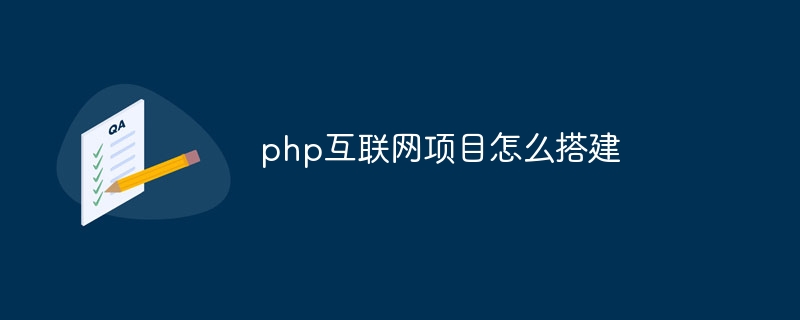Home >Backend Development >PHP Problem >How to build a php Internet project
How to build a php Internet project
- DDDOriginal
- 2023-07-10 11:48:291237browse
php Internet project construction steps: 1. Environment configuration, download the latest version of PHP, install the Web server, install and configure the database server; 2. Database design, determine the data table and define fields for each data table, According to the relationship between data tables, design foreign keys and indexes, create a database, and create data tables and fields; 3. Website development, create a project folder in the server root directory, and write the website's homepage, database connection file, and various functions Module code, etc., are tested in the local environment, and the completed project files are uploaded to the server.

The operating environment of this article: Windows 10 system, php8.1.3 version, dell g3 computer.
The construction process of Internet projects is a relatively complex task. This article will introduce you to the detailed steps of how to use PHP to build an Internet project, from environment configuration to database design and website development, to help you successfully complete the construction process.
1: Environment configuration
Before you start building an Internet project, you need to ensure that the environment has been configured. The following are the steps to configure the PHP development environment:
Install PHP: Download the latest version of PHP from the PHP official website and follow the prompts to install it.
Install Web server: Common web servers include Apache and Nginx. Choose one of them to install according to your needs.
Install the database server: MySQL is a commonly used relational database server. Install and configure the database server.
Two: Database Design
Before starting website development, you need to carry out database design. The following are the steps of database design:
Determine the data tables: Determine the data tables that need to be stored in the database, and define fields for each data table.
Design relationships: Design foreign keys and indexes based on the relationships between data tables to ensure data consistency and integrity.
Create database: Use MySQL command line tools or graphical interface tools to create a database and create data tables and fields.
Three: Website Development
After completing the environment configuration and database design, the next step is website development. The following are the detailed steps for website development:
Create a project folder: Create a folder in the root directory of the Web server to store project files.
Create the home page: Use HTML and CSS to write the home page of the website and determine the overall structure and style of the website.
Create database connection: Use PHP to write a database connection file, including database connection and related functions.
Develop functional modules: Write the code for each functional module according to the needs of the website, such as user registration, login, publishing articles, etc.
Conduct testing and debugging: Conduct testing and debugging in the local environment to ensure that the functionality and user experience of the website are normal.
Publish and go online: Upload the developed project files to the Web server, conduct online testing and optimization, and finally release and go online.
Conclusion:
Through this article you have learned how to build a PHP Internet project in detailed steps. From environment configuration to database design and website development, each step needs to be carefully considered and implemented. I hope this article will help you build a PHP Internet project, and I wish you a successful completion of your project!
The above is the detailed content of How to build a php Internet project. For more information, please follow other related articles on the PHP Chinese website!

